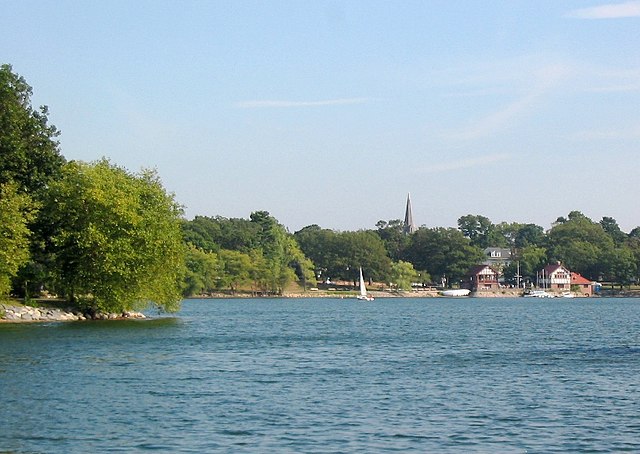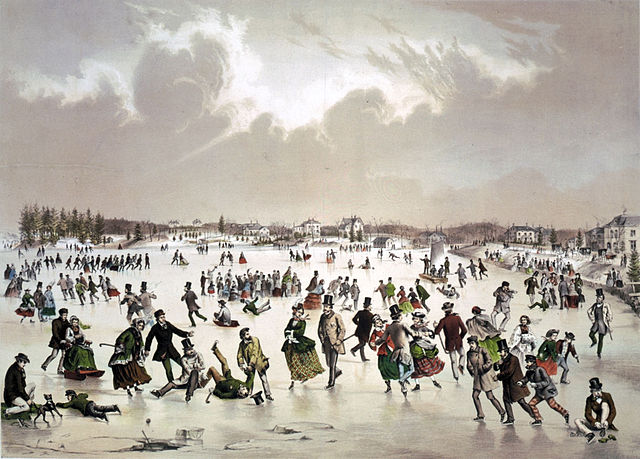Jamaica Pond is a kettle lake, part of the Emerald Necklace of parks in Boston designed by Frederick Law Olmsted. The pond and park are in the Jamaica Plain neighborhood of Boston, close to the border of Brookline. It is the source of the Muddy River, which drains into the lower Charles River.USGS 2005
Jamaica Pond, boathouse in distance, 2005
Skating on the pond, 1859
Ice delivery van, 1890
Swans, 2010
A kettle is a depression or hole in an outwash plain formed by retreating glaciers or draining floodwaters. The kettles are formed as a result of blocks of dead ice left behind by retreating glaciers, which become surrounded by sediment deposited by meltwater streams as there is increased friction. The ice becomes buried in the sediment and when the ice melts, a depression is left called a kettle hole, creating a dimpled appearance on the outwash plain. Lakes often fill these kettles; these are called kettle hole lakes. Another source is the sudden drainage of an ice-dammed lake and when the block melts, the hole it leaves behind is a kettle. As the ice melts, ramparts can form around the edge of the kettle hole. The lakes that fill these holes are seldom more than 10 m (33 ft) deep and eventually fill with sediment. In acid conditions, a kettle bog may form but in alkaline conditions, it will be kettle peatland.

Satellite image of kettle lakes in Yamal Peninsula (Northern Siberia), adjacent to the Gulf of Ob (right). The lake colors indicate amounts of sediment or depth.
A kettle in the Isunngua highland, central-western Greenland
A kettle pond in the Hossa hiking area, Suomussalmi, Finland
Numerous kettle lakes border the Denali Highway in Alaska








